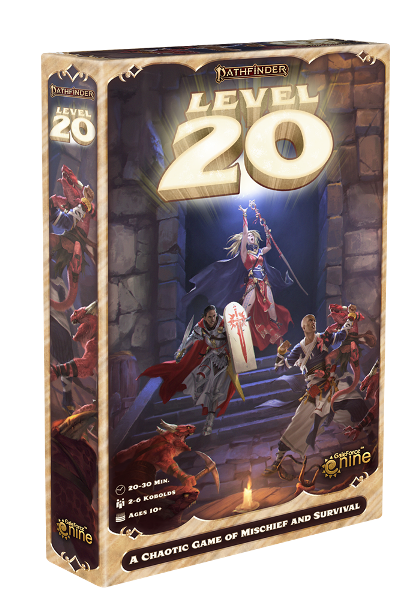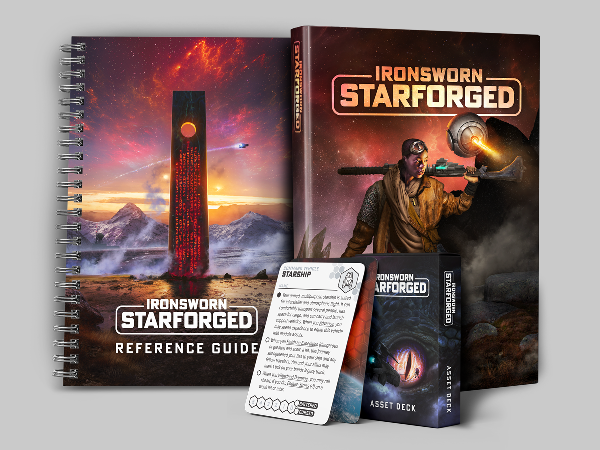Creating the Signature
By The Warden
PREVIOUSLY: In my quest to design a new game, currently entitled “Phoenix,” I have decided to make quick turn management a top priority and ran over some hindrances caused by rules-heavy mechanics and certain player habits. With a few concepts in mind (shown in last week’s post), I think it’s time to draft up a rough idea for the task resolution.

There are two main attractions when it comes to introducing a new game or system: theme and core mechanics. People want to know what you do/who you are in the game and how it gets done. The desired ratio varies from person to person, but when you have these two aspects locked and ready to show off to the world, you have a shot at gaining an audience and making sales. For me, theme may cause me to turn my head but it’s the mechanics that bring my whole body around to check it out.
In my quest to reveal my personal design mantra, I’m also hoping to use this series as a promotional tool and build up an eager audience as time goes on. Let’s admit that there is an ulterior motive behind this effort with the added benefit of working within the concept of this column: discussing game mechanics. Keeping that in mind, if I’m looking to keep readers hooked, I need to start getting into the mechanics I have in mind. It’s time to turn more than just heads and reveal what’s going on behind the curtain.
Seeing as I’m still holding onto my theme and keeping this design a secret from my Development Team, seems the only reveal that’s left is the core mechanics. Before starting on this journey, I had a base design in mind. Now that I’ve drafted up a list of key objectives and considerations for building a rapid-fire game where a single turn requires no more than 30 seconds, let’s see if my original concept fits the bill. It’s time to pull back the curtain and reveal Phoenix’ core resolution mechanics.
DICE, DICE, BABY
Yep, this game will use the standard RPG dice found throughout the gaming world but with one exception. No d20s. Phoenix utilizes d4s, d6s, d8s, d10s, and d12s, but the penultimate d20 has been removed from the equation. Its range is too large, in my opinion, to work within a cleaner and tighter system this is intended for.
This game will use steps as a measurement for dice during play. All dice rolls will start at the bottom with d4s and can step up to higher values during play, so starting off with a d4 and gaining +1 step means you’re now rolling a d6. Providing a step between the d12 and the d20 is problematic without introducing two dice into the equation (i.e. d12+d4) as a means of filling in the gap, so I’ve decided to wrap it up at a d12 as the highest step. How high you can step up your dice will depend on a character’s Potential.
BUILDING TO YOUR POTENTIAL
Rather than assign a static number to an attribute or ability score, all characters instead have Potentials marking the highest step they can use for attempting a certain kind of action, be it dependent on quickness, strength, or wits. For example, let’s assume there’s an Agility Potential listed at d8, indicating that character can roll as high as a d8 so long as she’s attempting an agile action. To reach that Potential, the player must build her dice.
Every dice roll starts at a d4 by default. This assumes the player provides an incredibly basic description of her action, something like “I’ll punch him.” To increase the dice to the character’s true Potential, players must add details to their description and gain +1 step per additional detail. For example, an agile player races forward and slides along the ground (+1 step), tripping up her opponent and knocking his head against the control panel to his right (+1 step). Now she’s rolling a d8 (d4 + 2 steps = d8) for the attack. Characters with higher Potential can get even crazier with the details because they are much more agile, stronger, alert, or whatever. (A list of Potentials has not been conceived as of yet.) Someone with a d12 Potential can slide under the opponent’s legs (+1 step), drop him down to the ground (+1 step), dislocate his kneecap (+1 step), and finish off with a punch to the face (+1 step). Bingo, now she’s attacking with a d12.
This applies the descriptive benefits discussed last week because there’s really no limit or conditions to how each description applies to building the dice other than whether or not they work towards accomplishing the action’s goal (such as attacking an opponent in the examples above). Individual GMs may have their own conditions and some players may be able to get away with adding on less functionary descriptions (maybe like the attacking character tossing back her hair in slow motion after drop kicking her opponent to the floor), but that’s up to the individuals playing the game to decide on its value. It can even work on a case-by-case basis or such fluffy descriptions must suit the character’s background, personality, or other role-played features. Whatever works, that’s the way you build your dice to meet your character’s Potential.
DIFFICULTIES AND OPPOSED ROLLS
I’ve been on the fence about using target numbers for this design, particularly as a long-time fan of opposing rolls and active defences. Expecting players to simply sit there and hope they’re wearing enough armour to take a beating and keep on standing takes away a crucial element to gameplay, but providing universal opposed rolls counters my fast game play objective. Simultaneously, I’m not exactly ready to ditch opposed rolls altogether.
So I’m going to break one of my cardinal rules and mix up target numbers and opposed rolls. It’s not something I’m comfortable with as I’ve always considered mixing success definitions as lazy design and there’s a possibility this could change as the design develops and playtesting reveals an alternate solution, but for now we’re going to work with distinct target numbers (known as Difficulties in this game) and opposed rolls when an action is attempted against a living target (particularly in combat).
GIVING IT A SIGNATURE
Not everything goes according to plan. It’s a personal motto of mine. No matter how awesome you believe you are or can be, things have a way of putting you in your place. While the main goal of task resolution is defining the boundaries for establishing success and failure in game play, I want to add something extra to the mix. I want some room for tiny hiccups when you succeed or huge side effects when you stumble, but not necessarily guaranteed. And it has to work in a quick and definitive manner to avoid slowing down the game.
Every game needs a signature, something unique or definitively characteristic to act as a shorthand in the community. “It’s d20 but with exploding dice,” or “it’s the game where damage is determined by a coin toss,” or “think of Numenera but with Fudge dice.” Every game has something completely unique, though the size of that uniqueness varies from game to game. For Phoenix, this is its signature.
Here’s what I came up with: odd and even numbers. Whenever you roll an even number, regardless of success or failure, nothing bad happens to you. Sure, you may fail the roll, but you don’t take any serious damage or hindrances for the effort. Roll an odd number, however, and things become a little problematic. These problems are known as Complications and vary from Minor (an odd number on a successful roll resulting in slight point costs, such as spending an ammo point when using a ranged weapon or to continue use of a special ability) to Major (damage, serious consequences such as being knocked prone, dazed, or other conditions).
The key to using odd and even numbers to determine Complications is good old fashioned visual cues. We learn about the differences between odd and even numbers from an early age, so early that even my niece and nephew know them. By keeping all dice rolls to a single die against either a static target number (the Difficulty) or an opposed result, players can quickly determine success/failure and the need for Complications.
This signature of the game is what got me really excited to start working on something new but as time goes on and I think about it more and more, it could also be incredibly problematic. Why? Because Complications would have to handle a wide variety of possibilities and work within my easy to learn objective. Major Complications are not a serious concern as they provide some of the standards of all gaming – damage and conditions. It’s Minor Complications that have me scratching my head because they have to provide something interesting to the conflict while still acknowledging success. Something along the line of a sacrifice to accomplish the success, which is why I’m thinking of a “power point” setup for just such an occasion
But that is a discussion for next time. Until then, what are your thoughts so far? Does it meet my initial concerns for creating a fast-paced, easy to learn RPG or is there an unexpected issue with it? Anxious designers want to know.



There was a very useful discussion on the ease of using certain dice mechanics which you may appreciate.
http://ryanmacklin.com/2013/11/user-friendly-mechanics/
Thanks. You’re a walking RPG design library, my friend.
P.S. Anyone who’s seriously into story games should check out Jason’s Kickstarter (https://www.kickstarter.com/projects/Jagash/posthuman-pathways) with only a couple of days remaining as this comment posts.
I try to do my best. :) I also have a large number of resources (for all the readers) on the RPG Design Panelcast at http://www.genesisoflegend.com.